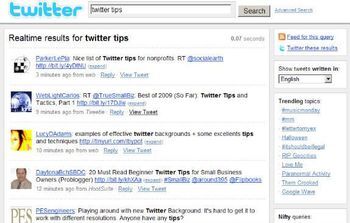
10 Steps to Twitter Success for Financial Advisors<b><b>
Whether you are new to Twitter or seasoned vet, here are 10 tips provided by TJ Gilsenan, Web-Savvy Advisor, to help financial advisors get the most out of the platform:

1. Participate in the conversation.<br><br>
Being a part of the industry on Twitter will connect you to a more relevant audience. To learn what other financial advisors are "tweeting" start with AdvisorTweets -- an aggregated, curated collection of what financial advisors say on Twitter.

2. Follow people that you want to know.<br><br>

3. Introduce yourself.<br><br>

4. Stay focused.<br><br>
Although some personal interaction is acceptable, discussing relevant financial topics will attract a more targeted audience.

5. Dont rely solely on automation.<br><br>

6. Tweet a balanced mix of information.<br><br>

7. Join Twitter discussions.<br><br>

8. Retweet (RT).<br><br>
If others are monitoring conversations about themselves, they will notice your retweet.

9. Listen to your audience.<br><br>
Respond to questions with quality content and people will see you as an informative resource, follow your Tweets, and may even retweet you.






